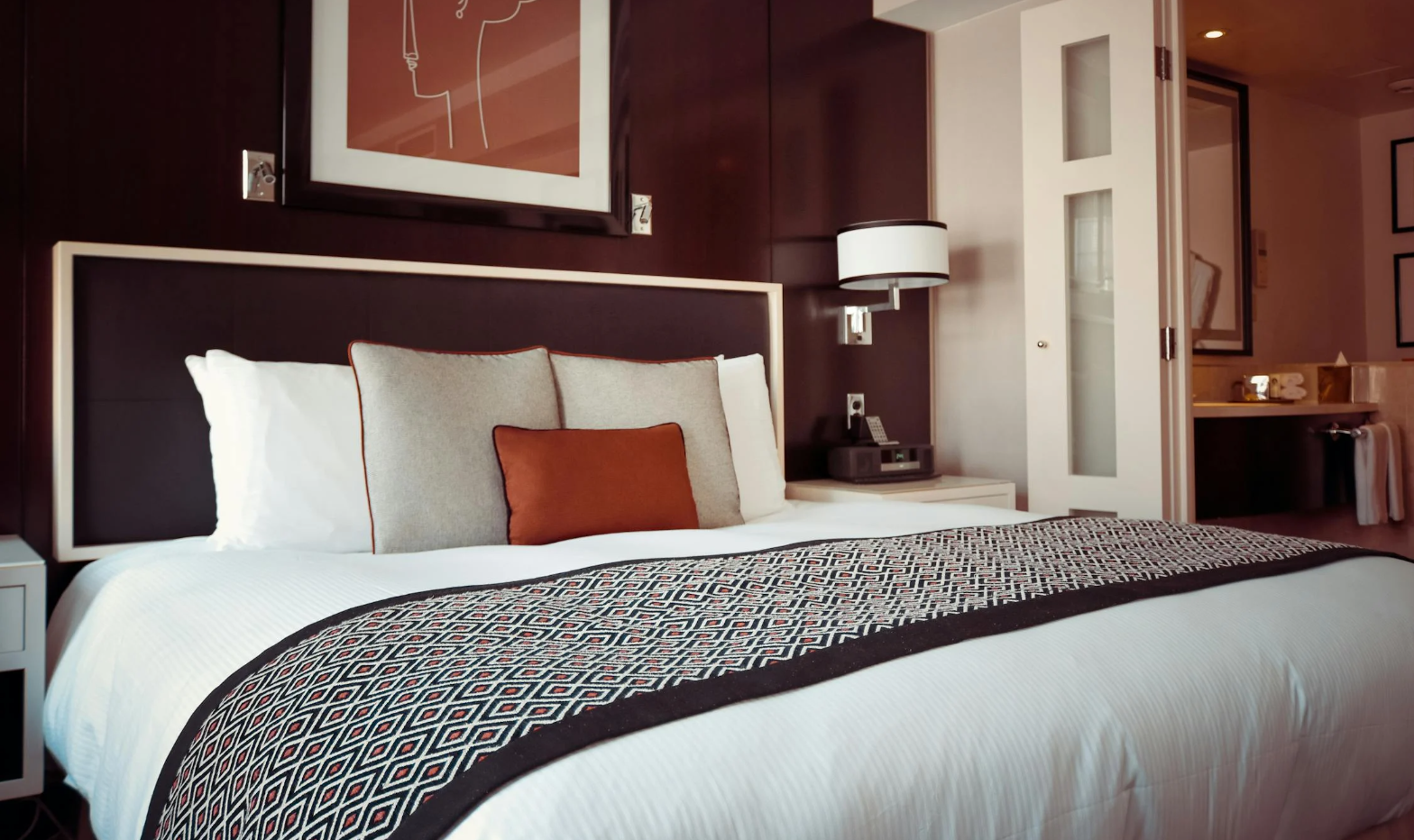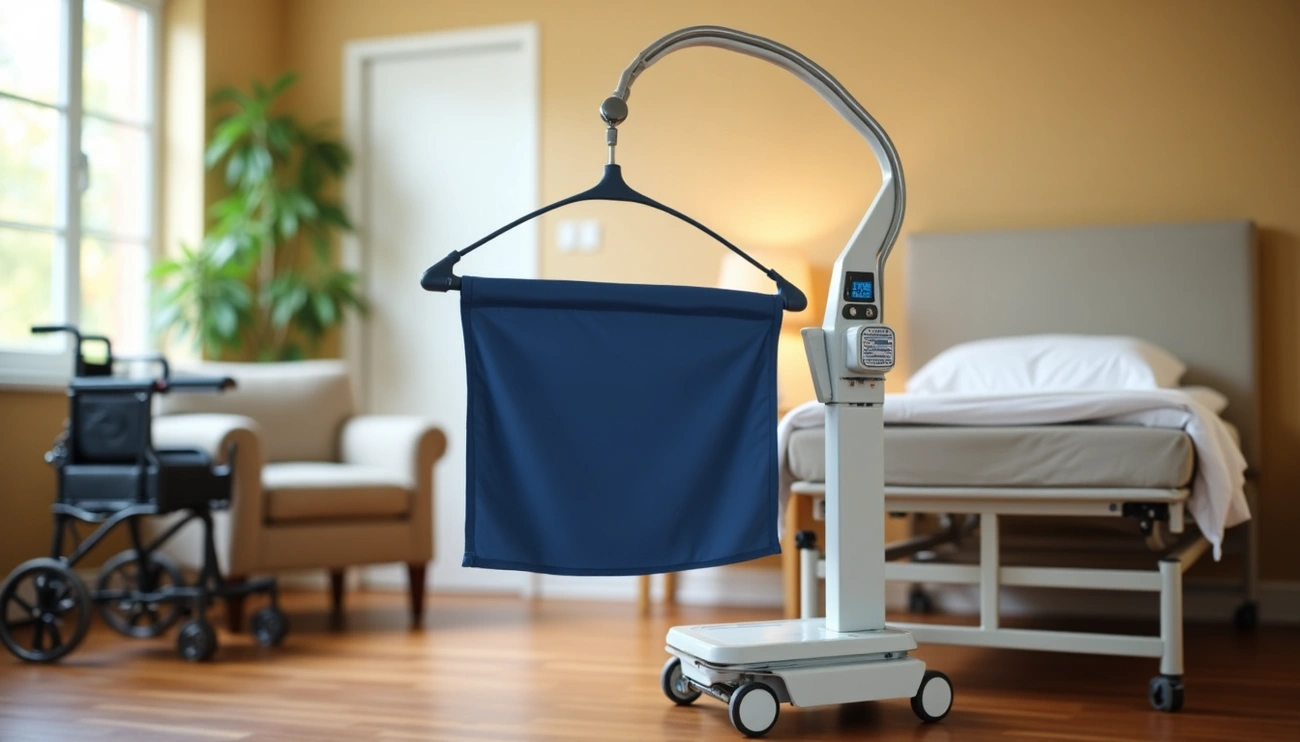Navigating the landscape of adjustable beds and their pricing as we move into 2024 can be a puzzling endeavor. These unique pieces of durable medical equipment have evolved from luxury items to essential tools for enhancing comfort, safety, and health. Individuals suffering from back pain, joint pain, and mobility issues have found invaluable relief and improved sleep quality with beds that adjust to their body’s needs. Moreover, the demand for adjustable beds for seniors underscores their importance in fostering independence and well-being. As the market expands, understanding the factors that influence the cost of an adjustable bed becomes crucial for consumers looking for the best rated adjustable beds that match their personal needs and budget.
This article aims to unfold the intricacies of adjustable bed pricing in 2024, shedding light on the factors that affect cost, including bed size, warranty, and key features to look for. Readers will be guided through the various price tiers of adjustable beds, highlighting what one can expect in terms of functionality and quality at each level. Additionally, the piece will delve into the hidden costs associated with purchasing an adjustable bed, the benefits of making such an investment, and the potential downsides. Coverage of Medicare and insurance for these beds, along with advice on selecting the right adjustable base, will provide a comprehensive roadmap for anyone considering an adjustable bed. This exploration intends to arm consumers with the knowledge needed to navigate the options available, ensuring they find a solution that brings them the utmost comfort and mobility support.
Factors that Influence the Cost of an Adjustable Bed
Features and Technology
Adjustable beds are equipped with a variety of features that significantly influence their cost. Basic models may offer simple head and foot adjustments, while high-end models include advanced technologies such as programmable positions, massage functions, and smart home compatibility. For instance, the inclusion of features like USB ports, under-bed lighting, and wireless remote controls adds to the convenience and, consequently, the price. Additionally, technologies that allow for the integration with home automation systems can also drive up costs.
Materials and Construction
The materials used in the construction of adjustable beds also play a crucial role in determining their price. High-quality materials such as reinforced steel frames and robust mechanical components are typically found in more expensive models. These materials ensure durability and reliability but at a higher cost. Conversely, more affordable options might use lighter, less durable materials, which could impact the bed’s longevity and support capabilities.
Brand and Reputation
The brand’s reputation and market positioning significantly affect adjustable bed pricing. Established brands often charge a premium due to their proven track record of quality and customer satisfaction. For example, brands known for innovative designs and exceptional service, like Tempur-Pedic and Sleep Number, might offer their adjustable beds at higher price points compared to less known manufacturers.
Size and Configuration
The size and configuration of the adjustable bed are also pivotal in setting the price. Larger sizes, such as king and queen, are generally more expensive than single or twin sizes due to the increased material and more complex mechanisms required. Additionally, beds with unique configurations, such as split designs that allow individual adjustment on each side of the bed, can also be more costly. These configurations offer enhanced personalization but require additional technology and mechanics.
Additional Features
Extra features that enhance comfort and functionality can also impact the cost of adjustable beds. Features like zero-gravity presets, built-in massage systems, and adjustable leg heights provide added comfort and convenience but at an additional cost. For instance, adjustable beds featuring a rolling wave massage function and lumbar support can be more expensive due to the additional motors and mechanisms required.
Each of these factors contributes to the overall cost of an adjustable bed, allowing consumers to choose a product that best fits their needs and budget.
Price Tiers of Adjustable Beds and What to Expect
Adjustable beds have become an essential part of achieving a comfortable and therapeutic sleep experience, catering to a wide range of needs and preferences. As we delve into the pricing tiers of adjustable beds, it’s important to understand what to expect in terms of features, quality, and value across different price ranges. From budget-friendly options to luxurious premium choices, each tier offers unique benefits tailored to individual requirements.
Budget-Friendly Options
For those looking to experience the benefits of an adjustable bed without a hefty price tag, there are several budget-friendly options available. Brands like Helix and Brooklyn Bedding offer adjustable bases starting as low as $300, providing basic adjustability features such as head and foot lifting. The Linenspa Hybrid Medium-Firm Mattress and Adjustable Bed Base stand out as a great choice for budget-conscious shoppers. It’s available in five sizes and can be purchased as just a frame or a set that includes a mattress. However, these budget options may lack additional features like trial periods offered by brands like Nectar and DreamCloud. It’s also important to note that while affordable, these options might use lighter, less durable materials, impacting longevity and support.
- Helix Adjustable Base: Offers basic adjustability with a wide range of motion for upper and lower body positions.
- Brooklyn Bedding Adjustable Base: Similar to Helix but also lacks a trial period, making it a riskier purchase for those unsure of their needs.
- Linenspa Hybrid Medium-Firm Mattress and Adjustable Bed Base: An all-in-one solution for those on a strict budget.
Mid-Range Options
Most adjustable beds fall within the mid-range price tier, typically costing between $1,000 and $3,000. This tier includes beds like the Nectar Adjustable Bundle, which not only provides an adjustable base but also a Nectar mattress of your choice and a bedding set. The DreamCloud Adjustable Bed Frame is another notable option, offering programmable positions for a custom sleep experience. These beds often include more advanced features such as customizable positions, massage functions, and sometimes even smart home compatibility.
- Nectar Adjustable Bundle: Includes an adjustable base, mattress, and bedding set, offering significant value.
- DreamCloud Adjustable Bed Frame: Allows for a wide range of programmable positions, elevating comfort to the next level.
Premium Options
At the higher end of the spectrum, adjustable beds can cost anywhere from $3,000 to $7,000, depending on the brand, size, and features. Premium options like the Tempur-Pedic TEMPUR-Ergo Extend Smart Base and the Sleep Number beds offer cutting-edge features such as sleep tracking, automatic snore response, sleep monitoring, and zoned massage. These beds are designed for those seeking the ultimate sleep experience, with top-of-the-line materials and technology for unmatched comfort and support.
- Tempur-Pedic TEMPUR-Ergo Extend Smart Base: Features advanced positioning options, sleep tracking, and zoned massage for luxurious comfort.
- Sleep Number Beds: Known for their customizable firmness levels, these beds offer a personalized sleep environment for solo sleepers and couples alike.
In conclusion, when exploring adjustable beds, it’s crucial to consider not only the upfront cost but also the value offered by each price tier. Budget-friendly options can provide basic adjustability and comfort, mid-range beds offer enhanced features and better materials, and premium models deliver the highest level of technology and customization. By understanding what to expect in each pricing tier, consumers can make an informed decision that best suits their needs and budget.
Key Features to Consider
When selecting an adjustable bed, certain key features can significantly enhance comfort, convenience, and the overall sleep experience. These features, ranging from massage functions to smart home integration, offer a personalized sleep environment tailored to individual needs and preferences. Below, we explore essential features to consider when choosing an adjustable bed.
Massage Functions
Many adjustable beds come equipped with massage features, providing therapeutic relaxation that can help ease into sleep or unwind after a long day. The intensity and type of massage can vary, with some beds offering dual massage zones and multiple speed settings. For instance, the Puffy Adjustable Base includes three speed settings and two massage zones, allowing for a customized relaxation experience. However, opinions on the effectiveness of massage features can differ, with some finding the vibrations more annoying than stimulating. It’s advisable to try the massage function in person before making a purchase decision.
Wireless Controls
The convenience of wireless controls cannot be understated. Adjustable beds like the Nectar Adjustable Bed Frame simplify adjustments with a wireless remote or a compatible app, featuring preset settings for anti-snore, zero-gravity, and TV recline positions. The ability to set favorite positions adds a layer of personalization, making it easier to achieve the perfect setup for sleep or relaxation. Additionally, some models offer programmable memory presets, allowing users to return to their preferred configurations effortlessly.
Smart Home Integration
As smart home technology becomes more prevalent, adjustable beds have begun to incorporate features that allow for seamless integration with existing systems. Beds equipped with smart home capabilities enable voice commands to adjust settings, creating a more accessible and convenient sleep environment. For example, LINAK’s voice control solution allows beds to work with Alexa or Google Assistant, automating routines like dimming lights or adjusting the bed to a sleep position with simple voice commands. This integration enhances the overall user experience, offering a level of convenience and customization previously unattainable.
Customization Options
The ability to customize an adjustable bed to fit individual sleep preferences is a significant consideration. Options such as head, neck, and foot tilt adjustments, including a pillow tilt setting, provide a highly personalized sleep experience. The Zero-Gravity and Anti-Snore presets are popular choices for those looking to alleviate specific discomforts. Furthermore, the inclusion of USB charging ports and under-bed lighting adds practicality and convenience, though it’s important to consider the placement of these features for accessibility.
In summary, when exploring adjustable beds, considering these key features can lead to a more informed decision. Massage functions, wireless controls, smart home integration, and customization options each play a role in enhancing the adjustable bed experience. By prioritizing features that align with personal needs and preferences, individuals can select an adjustable bed that offers the utmost in comfort, convenience, and support.
Hidden Costs Associated with Adjustable Beds
When considering the purchase of an adjustable bed, it’s essential to be aware of the hidden costs that can impact your overall budget. These costs, often overlooked during the initial buying process, include mattress compatibility, assembly and delivery charges, and the price of accessories and any necessary upgrades. Understanding these additional expenses is crucial for making an informed decision that aligns with your financial expectations and needs.
Mattress Compatibility
One critical factor to consider is the compatibility of your current mattress with the new adjustable bed frame. Not all mattresses are suitable for use with adjustable beds, particularly older innerspring models that may not flex well with the bed’s movements. To ensure optimal performance and comfort, you might need to invest in a new mattress designed to complement the adjustable features seamlessly. Preferred options include hybrid, latex, or memory foam mattresses, known for their flexibility and durability. This compatibility requirement could lead to additional costs if a mattress replacement becomes necessary.
Assembly and Delivery
The complexity of assembling an adjustable bed frame can prompt buyers to opt for professional assembly services. Although this ensures the bed is set up correctly, it might incur extra fees. Additionally, the size and weight of adjustable bed frames often result in higher delivery charges. Some brands offer white glove delivery services, which include unpacking, assembly, and removal of packaging materials, but at an additional cost. It’s important to factor in these expenses when calculating the total investment in your adjustable bed.
Accessories and Upgrades
Adjustable bed frames offer a realm of comfort that can be further enhanced with the right accessories. Items such as mattress toppers can improve the sleep surface, while extra remotes or smartphone apps add convenience but also contribute to the overall expense. Upgrades like built-in massage systems and adjustable leg heights provide added comfort and functionality but come at an extra cost. When considering these enhancements, it’s vital to weigh the benefits against the increase in price to ensure they align with your preferences and budget.
In summary, while adjustable beds present a significant advancement in comfort and health benefits, potential buyers should be mindful of the hidden costs associated with mattress compatibility, assembly and delivery, and accessories and upgrades. By accounting for these additional expenses upfront, individuals can make a more informed decision that best suits their needs and financial situation.
Benefits of Investing in an Adjustable Bed
Investing in an adjustable bed brings a myriad of advantages, from health benefits to enhanced comfort and improved sleep quality. These beds have revolutionized the way individuals approach sleep, merging technology with customization to cater to a wide array of needs.
Health Benefits
Adjustable beds are not merely about luxury; they are powerful tools for improving health and well-being. They can alleviate symptoms associated with various medical conditions, such as sleep apnea, snoring, acid reflux, and chronic pain. By enabling users to elevate their head or legs, these beds help distribute weight more evenly and reduce pressure on sensitive areas, promoting better circulation and spinal alignment. This adjustment can significantly relieve back pain, arthritis discomfort, and circulation problems. Moreover, the ability to adjust sleeping positions can offer independence to those who might otherwise require assistance, enhancing personal safety and comfort.
Enhanced Comfort
The convenience and comfort provided by adjustable beds are unmatched. Many models come equipped with features designed to enhance the user’s relaxation experience. USB ports allow for easy charging of devices, ensuring everything you need is within reach. Remote controls and smart home integration offer effortless adjustment of the bed’s position, making it simple to find the perfect setup for reading, watching TV, or sleeping. Additionally, some adjustable beds feature massage functions, offering targeted relief and relaxation. These features not only contribute to physical comfort but also add a layer of convenience that enhances the overall user experience.
Improved Sleep Quality
The impact of adjustable beds on sleep quality cannot be overstated. By allowing for personalized adjustment of sleeping positions, these beds cater to individual preferences and needs, leading to a significant improvement in sleep. A survey of 600 adjustable bed owners revealed that more than 500 participants experienced enhanced sleep quality after using an adjustable bed. This improvement is attributed to the beds’ ability to reduce snoring, acid reflux, and chronic pain by enabling users to change their sleeping position. Furthermore, the reduction in muscle tension and promotion of spinal alignment contribute to a more restful and rejuvenating sleep.
In summary, the benefits of investing in an adjustable bed extend far beyond mere comfort. They offer significant health advantages, enhanced comfort through customizable features, and improved sleep quality by addressing various sleep-related issues. Whether one is looking to alleviate specific health conditions or simply aiming for a more comfortable and customized sleep experience, adjustable beds present a valuable investment towards achieving better health and well-being.
Pros and Cons of Adjustable Beds
Adjustable beds, also known as power bases or adjustable frames, have become a popular choice for those seeking a more personalized sleep experience. They offer a range of benefits that cater to various needs, from health-related adjustments to enhanced comfort for everyday activities like reading or watching TV in bed. However, like any significant investment, they come with their own set of drawbacks that potential buyers should consider. Below, we delve into the advantages and disadvantages of adjustable beds to help you make an informed decision.
Advantages
- Enhanced Comfort and Support: The primary allure of adjustable beds is the unparalleled comfort and support they provide. By allowing for the elevation of the head, torso, and legs, these beds can alleviate pressure points and promote proper spinal alignment. This customization can lead to a reduction in back pain and an improvement in overall sleep quality.
- Improved Health Benefits: Adjustable beds can significantly improve various health conditions. Elevating the upper body helps reduce snoring and symptoms of GERD, while adjusting the bed’s position can enhance blood circulation and reduce swelling in the legs. For individuals with mobility issues, the ability to adjust the bed aids in getting in and out of bed with ease, promoting independence and safety.
- Customization for Couples: Split king adjustable beds offer the unique advantage of allowing each partner to choose their preferred sleeping position without disturbing the other. This feature ensures that both individuals can enjoy a customized sleep experience, potentially leading to better sleep quality for both.
- Additional Features: Many adjustable beds come equipped with extra features such as built-in massage functions, USB ports for charging devices, and smart home integration. These features add a level of convenience and luxury to the sleep experience that traditional beds cannot match.
Disadvantages
- Higher Costs: One of the most significant barriers to purchasing an adjustable bed is the cost. Prices for these beds start around $1,000 and can go much higher depending on the brand and features. While the benefits may justify the expense for some, it’s essential to consider whether the added convenience and comfort are worth the investment for your specific needs.
- Limited Trial Periods and Final Sales: Due to the bulky nature of adjustable beds, many brands do not offer trial periods, making it a potentially risky purchase for those unsure of their needs. It’s crucial to choose a brand that offers a trial period if you’re apprehensive about making such a significant change to your sleeping arrangements.
- Weight and Mobility Issues: Adjustable beds are significantly heavier than traditional bed frames, making them difficult to move. This can be a considerable inconvenience for those who move frequently or like to rearrange their bedroom setup. Additionally, cleaning under and around the bed can be more challenging due to its weight and complexity.
- Compatibility Issues: Not all mattresses are suitable for use with adjustable beds. You may need to purchase a new mattress designed for flexibility and durability, adding to the overall cost. Additionally, finding sheets and bedding that fit your adjustable bed properly can be more challenging and potentially more expensive than standard sizes.
In summary, adjustable beds offer a range of benefits that can enhance comfort, improve health conditions, and provide a personalized sleep experience. However, the higher cost, potential difficulty in moving and cleaning the bed, and compatibility issues with mattresses and bedding are important factors to consider. By weighing these pros and cons, individuals can determine whether an adjustable bed is the right choice for their needs and lifestyle.
Medicare and Insurance Coverage for Adjustable Beds
Understanding Medicare and insurance coverage for adjustable beds is crucial for those considering this investment for health and comfort reasons. This section will delve into the eligibility criteria, coverage details, and the application process to secure coverage for an adjustable bed under Medicare.
Eligibility Criteria
For Medicare to cover an adjustable bed, certain conditions must be met. Firstly, the bed must be prescribed as durable medical equipment (DME) by a Medicare-enrolled physician, indicating it is medically necessary for the patient’s condition. The patient must have a medical condition that necessitates positioning of the body in ways an ordinary bed cannot provide. Additionally, a detailed prescription from the doctor outlining the medical need for an adjustable bed and supporting medical records are required. This ensures that only those with genuine medical needs can access Medicare coverage for adjustable beds.
Coverage Details
Once eligibility is established, Medicare Part B may cover the cost of an adjustable bed, considering it as DME. Medicare typically pays 80% of the approved amount after the Part B deductible has been met, leaving the patient responsible for the remaining 20%. However, this can vary depending on the specific Medigap plan, with some plans potentially covering the entirety of the Part B coinsurance and copayment. Medicare Advantage plans, also known as Part C, offer the same benefits as Original Medicare but may include additional coverages. It’s important to note that the adjustable bed must meet Medicare’s standards for DME in terms of quality, durability, and medical efficacy, and must be purchased or rented from a Medicare-approved supplier to ensure coverage.
How to Apply
- Consult Your Physician: The first step is to discuss your medical needs with your doctor, who must certify the necessity of an adjustable bed for your condition.
- Obtain a Prescription: If deemed medically necessary, your doctor will prescribe an adjustable bed. This prescription must detail your medical condition and the necessity for an adjustable bed.
- Select a Medicare-Approved Supplier: Use Medicare’s supplier directory to find a supplier enrolled in Medicare. Coverage may be denied if the DME is not purchased or rented from an approved supplier.
- Submit a Claim: Usually, the supplier will submit a claim to Medicare on your behalf. If this does not happen, you can contact Medicare directly at 1-800-MEDICARE (1-800-633-4227) for assistance.
- Await Approval: Medicare will review your documentation to determine coverage eligibility. If your request is denied, you have the right to appeal the decision.
By following these steps and ensuring all requirements are met, individuals can navigate the process of obtaining Medicare coverage for an adjustable bed. This coverage can significantly reduce out-of-pocket expenses, making adjustable beds more accessible for those who need them for medical reasons.
How to Choose the Right Adjustable Bed for You
Assessing Your Needs
When considering an adjustable bed, the first step is to evaluate your personal health needs and lifestyle preferences. Many individuals find relief from health conditions such as snoring, acid reflux, or chronic pain by adjusting their sleep positions. For example, elevating the head can alleviate neck and back pain, while raising the legs may improve circulation and reduce lower back discomfort. Additionally, adjustable beds can enhance lifestyle activities such as reading, watching TV, or using a laptop in bed, making them a versatile addition to any home.
It is also essential to consider your sleep habits. If you frequently change positions throughout the night or have a partner with different sleep needs, an adjustable bed can offer individualized comfort that accommodates both of you. Identifying your primary reasons for needing an adjustable bed will guide you in selecting a model that addresses your specific requirements.
Setting a Budget
Adjustable beds are available in a wide range of prices, typically ranging from $1,000 to $3,000, with luxury models equipped with advanced features like sleep tracking costing even more. It’s crucial to set a realistic budget that not only considers the initial purchase price but also accounts for potential additional costs such as delivery, assembly, and any necessary accessories like mattresses or bedding that are compatible with adjustable frames.
Some brands offer financing options or sales, which can make higher-priced models more accessible. Additionally, it’s worth considering the long-term benefits of investing in an adjustable bed, such as improved sleep quality and health benefits, which may justify a higher upfront cost.
Reading Reviews and Warranties
Before making a purchase, it is advisable to read customer reviews and check the warranty conditions of different adjustable beds. Reviews can provide insights into the quality and performance of the bed, as well as the customer service experience with the brand. Look for reviews that address the durability of the frame, the effectiveness of the adjustable features, and the overall satisfaction of other buyers.
Warranties are also crucial when purchasing an adjustable bed. They can vary significantly between brands, with some covering structural defects for up to 25 years, while others may only cover electrical components for a few years. Ensure that you understand what is included in the warranty and what actions might void it. Checking the fine print can help you avoid unexpected costs in the future and ensure that your investment is protected.
By thoroughly assessing your needs, setting a budget, and reading reviews and warranties, you can make an informed decision on the right adjustable bed that will provide comfort and support tailored to your lifestyle and health requirements.
Conclusion
Through this exploration of adjustable bed pricing and features expected in 2024, it’s evident that the right adjustable bed can significantly enhance comfort, health, and overall quality of life. From understanding the diverse factors influencing cost, such as technology, materials, and brand reputation, to unpacking the price tiers that cater to different budgets and needs, consumers are better equipped to make informed decisions that reconcile their personal requirements with financial considerations. The key takeaway is the imperative role comprehensive research plays in selecting an adjustable bed that not only fits one’s budget but also aligns with individual health needs and lifestyle preferences.
Moreover, delving into the hidden costs, the myriad benefits, and the importance of insurance coverage highlights the multifaceted nature of investing in an adjustable bed. With an emphasis on the significant health benefits, such as improved sleep quality and alleviation of medical conditions, alongside the luxury of customizable comfort features, adjustable beds represent a valuable investment in one’s health and well-being. As we look towards 2024, the expanding options and functionalities of adjustable beds offer exciting prospects for enhancing personal comfort and independence, making it all the more crucial for consumers to navigate these choices with informed insight and clarity.
FAQs
1. How long does an adjustable bed typically last?
An adjustable bed typically has a lifespan of 10 to 20 years. This can vary depending on the quality of the bed and the level of maintenance it receives.
2. Does Medicare cover the cost of adjustable beds for seniors?
Yes, Medicare does cover the cost of adjustable beds under Part B, which includes durable medical equipment (DME). Once the Part B deductible is met, Medicare will cover 80% of the cost of the adjustable bed.
3. Can insurance cover the purchase of an adjustable bed?
Yes, patients with specific medical conditions, such as paraplegia or a severe hip fracture, may qualify for Medicaid coverage for an adjustable bed. This is to help provide comfort and reduce the risk of further injury.
4. What is the typical price range for an adjustable bed?
The cost of an adjustable bed generally ranges from $1,000 to $3,000, depending on factors like brand, size, and additional features.












